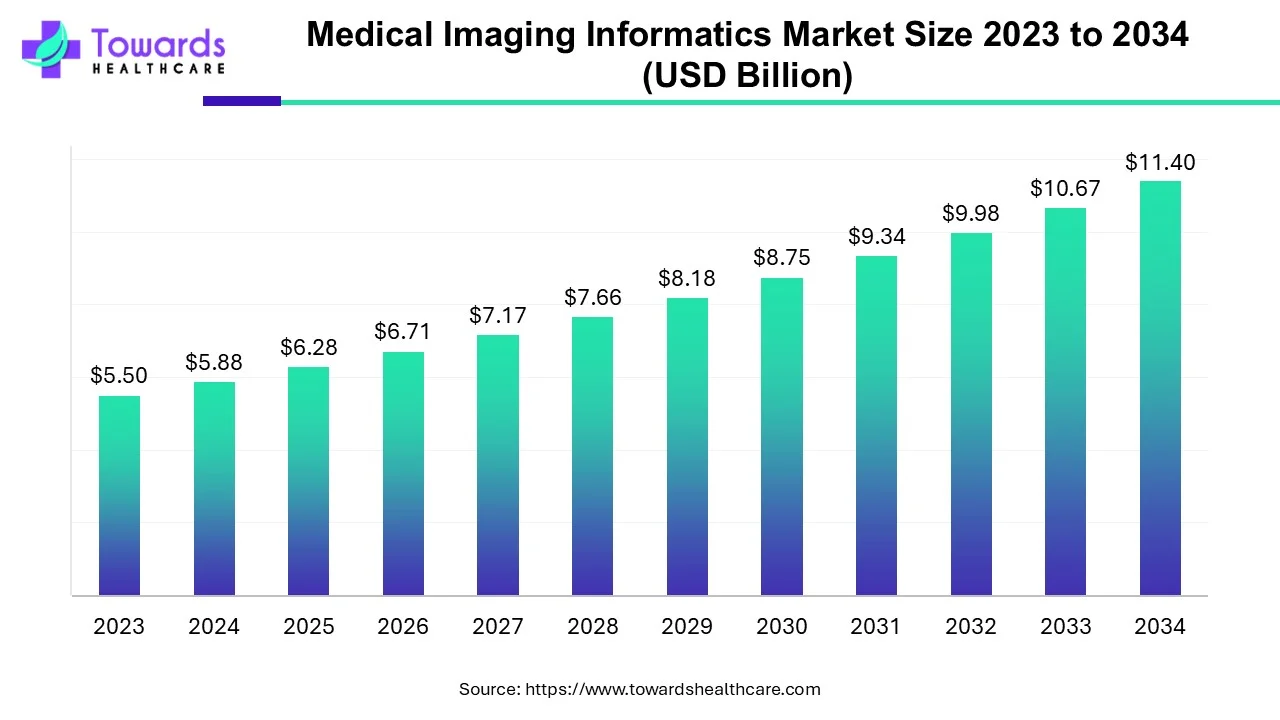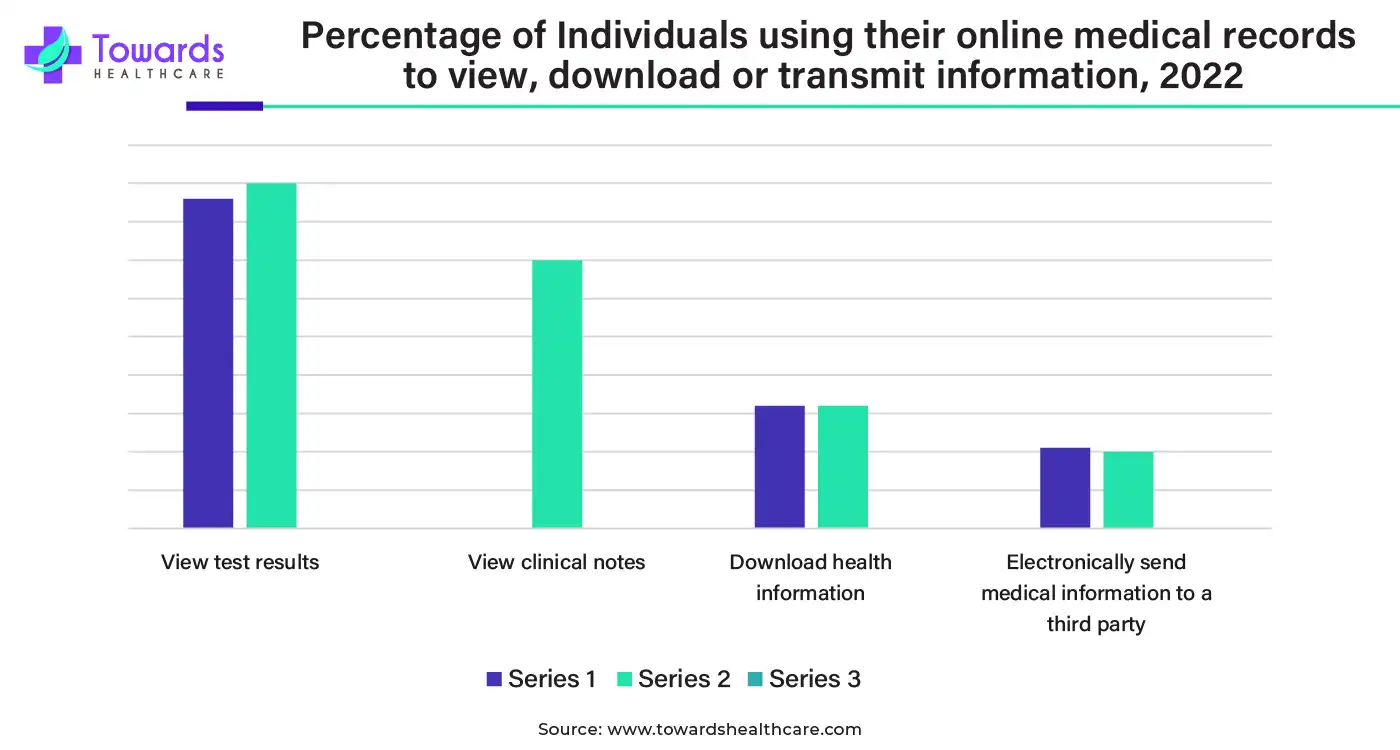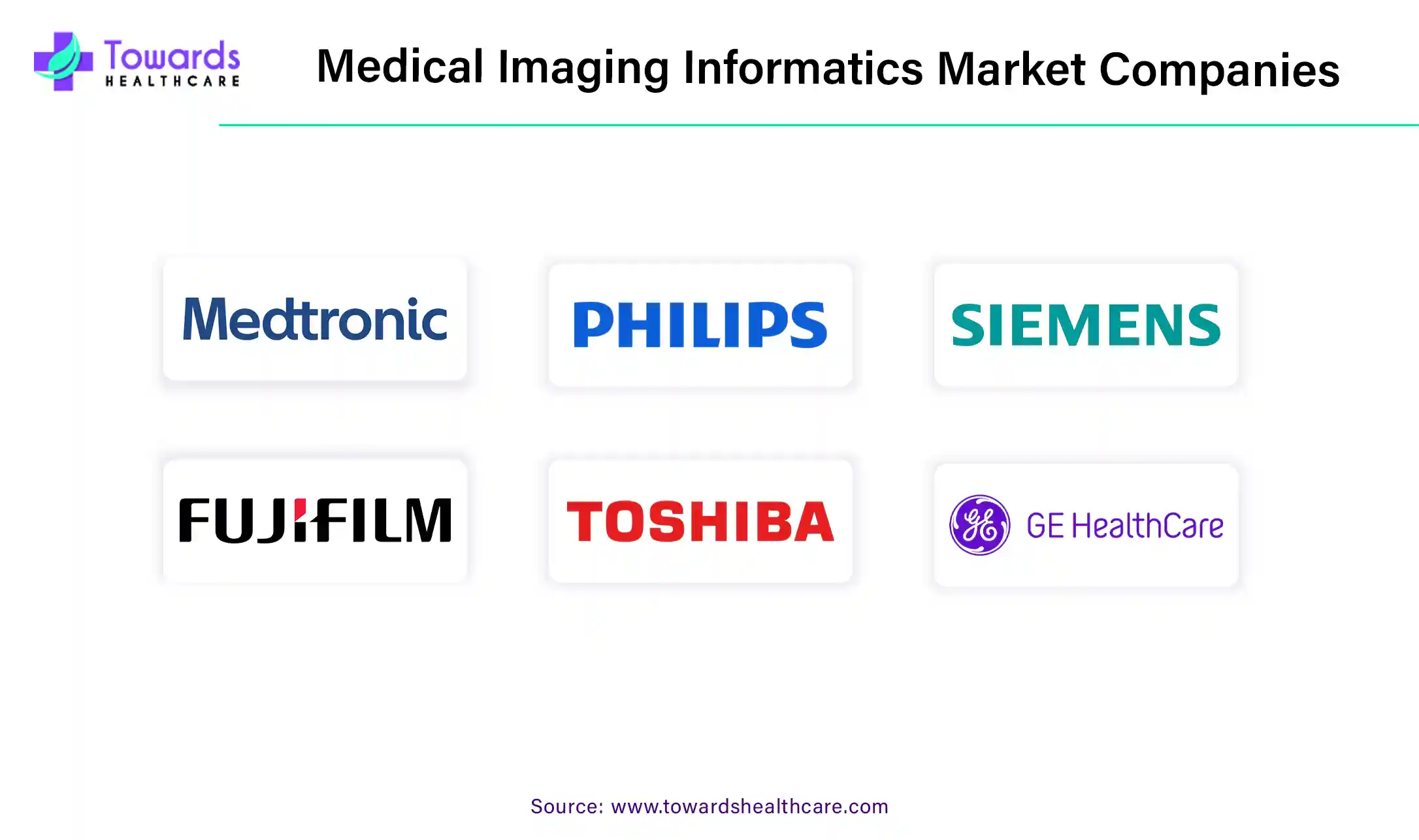April 2025

The global medical imaging informatics market was predicted at US$ 5.5 billion in 2023 and is projected to grow to US$ 11.4 billion by 2034, rising at a compound annual growth rate (CAGR) of 6.85% from 2024 to 2034. The adoption of advanced technologies by healthcare facilities due to the emergence of health-related disorders supports the expansion of medical imaging informatics in capturing, storing, and documenting patients' electronic health information, which promotes the importance of the medical imaging informatics market.

Medical imaging informatics is the interface between medical science, computer science, and information science that assists doctors, clinicians, and healthcare professionals in keeping patients' personal health information confidential. This information can be present in the form of medical images that are captured and further documented to save the time and cost of processing. In the U.S., this technology has gained popularity due to its importance in almost all healthcare settings, and there is a strict implementation of these technological aspects to serve transparency and professionalism.
The Medical Image Management and Processing System offers exclusive software functionality and features in healthcare sectors. X-rays or CT scans can be visualized on computer screens, which helps doctors and patients understand health challenges and track health recovery. These innovations improve the process workflows and enhance reliability and precision in the medical profession. The National Institute of Health (NIH) supports researchers in the planning and budgeting for data management and scientific data sharing.

The enhancements in image quality, data management, and electronic health records are supported by AI-driven imaging, and the emerging trends are gaining popularity worldwide. New product approvals and their launch across different nations also boost the growth of the medical imaging informatics market. Health informaticians assist in imaging information systems and clinical operations by developing specific test plans and reporting formats. Digital image processing helps in remote sensing, medical imaging, and industrial automation. Medical physicists and MRI technologists also play major roles in designing workflows, operating computing equipment, and preparing patients for scanning. The growing investments, funding, and product launches by companies or government organizations also contribute to the expansion of the medical imaging informatics market. The AI-assisted image reconstruction methods utilize deep learning algorithms to put unclear data in medical images and reconstruct them to an optimized quality.
Clinical Data Repositories: The clinical data repositories can collect medical information from electronic health records, radiology and pathology archives, biospecimen repositories, tumor registries, genomic sequencing devices, and clinical trial management systems. These data management and exploration tools help clinical sites and research institutions track medical records efficiently for further research and innovations.
Clinical, Technical, Automation and Security Challenges: There are several challenges posed by clinical and technical operations related to accuracy, precision, contamination of reaction components, reliability, etc. The market also deals with automation and security challenges regarding confidentiality, data privacy, and performance parameters. The cost-effectiveness of various diagnostic tests can also be a barrier for most low-income community people, which limits the progress of the medical imaging informatics market.
Advancements in Imaging Technology: Molecular imaging, functional imaging, high-resolution imaging, and case studies with clinical applications are the developments in medical imaging technology. The high-resolution imaging systems include CT, MRI, and ultrasound systems that allow clinicians to capture detailed images and identify anatomical changes. Functional imaging includes PET-CT, SPECT-CT, and diffusion MRI which are prominent in diagnosing and treating cancer, neurodegenerative disorders, and other complex health conditions. Molecular imaging plays vital roles in oncology, neurology, and cardiology in diagnosing and staging health disorders.
By application, the radiology segment held the largest share of the medical imaging informatics market in 2023 due to significant investments in radiology which is efficient in the diagnosis of several diseases. Radiology diagnoses certain disorders through imaging techniques which allow researchers to identify fine changes in genetic structures. Computer applications enable radiologists to find genetic abnormalities and perform CT scans, MRIs, and many other techniques efficiently.
By application, the cardiology segment is projected to grow significantly during the forecast period due to the rising incidence of mortality caused by cardiovascular diseases. Cardiologists are professional in diagnosing and treating cardiovascular disorders, which also drives the growth of this segment.
By deployment mode, the cloud-based segment dominated the medical imaging informatics market due to its effectiveness, scalability, and accessibility, which allow healthcare professionals to access medical imaging data remotely. Remote healthcare facilities are emerging due to the incorporation of telehealth, precision medicine, personalized treatment plans, and AI-assisted tools and techniques.
By deployment mode, the on-premise segment is expected to grow significantly in the coming years because it offers high security and control that are favorable for healthcare institutions prioritizing data privacy and regulatory compliance. Confidentiality and data privacy are important parameters in clinical research practices that improve patient trust and business accountability.
By component, the software segment led the medical imaging informatics market due to its remarkable contribution to data management and analytics. The software allows easy storage and retrieval of data that may be present in the form of health records, medical images, genetic history information, etc. Doctors are becoming proficient in various research disciplines, including genomics, proteomics, molecular biology, genetics, clinical biochemistry, etc., which require software tools to save a huge amount of information safely.
By component, the hardware segment is predicted to gain a significant revenue share during the forecast period due to various imaging system devices and enhancement in the efficiency of imaging processes, enabling better diagnostic outcomes. Healthcare facilities greatly rely on technical services like installation, maintenance, and support to provide precise solutions for complex imaging tasks.
By end user, the hospital segment held the dominating share in the medical imaging informatics market due to its heavy reliance on medical imaging technologies for improved patient care, which drives excellence and innovation. Several techniques, like CT scans, MRI, radiology, neurology, etc., are routinely performed in hospitals, which require well-designed medical equipment, laboratory instruments, and trained medical professionals to conduct tests and offer test results.
By end user, the diagnostic centers segment is estimated to grow at a significant rate in the market during the forecast period due to the expansion of several diagnostic facilities and outstanding diagnostics services. Several diagnostic techniques, such as ELISA, RIA, PCR, blood testing, next-generation sequencing, etc., are performed in research laboratories of hospitals, clinics, academic institutions, and other healthcare facilities.
North America dominated the medical imaging informatics market due to the wide adoption of medical imaging technologies and supportive measures from government organizations. The Radiological Society of North America (RSNA) represents over 48,000 medical imaging professionals in 31 radiology subspecialties from 160 countries all around the world. The RSNA sets the goal of improving capabilities to develop sustainable data resources to support scientific research, data management, and data sharing. The NIBIB-funded Medical Imaging and Data Resource Center Project is supported by the American College of Radiology (ACR) and the American Association of Physicists in Medicine (AAPM).
Asia Pacific is expected to be the fastest-growing region in the medical imaging informatics market during the predicted timeframe due to favorable government initiatives and the increased shift towards medical imaging technology. The Ministry of Electronics and Information Technology, supported by the Government of India, sponsored many R&D projects and the development of telemedicine technology to provide quality healthcare in rural areas or remote locations. The Indian Council of Medical Research established the National Health Research Program, which focuses on the mortality rates due to 10 disease conditions, including cancer, TB, anemia, oral health, etc.

By Application
By Deployment Mode
By Component
By End User
By Region
April 2025
April 2025
April 2025
April 2025